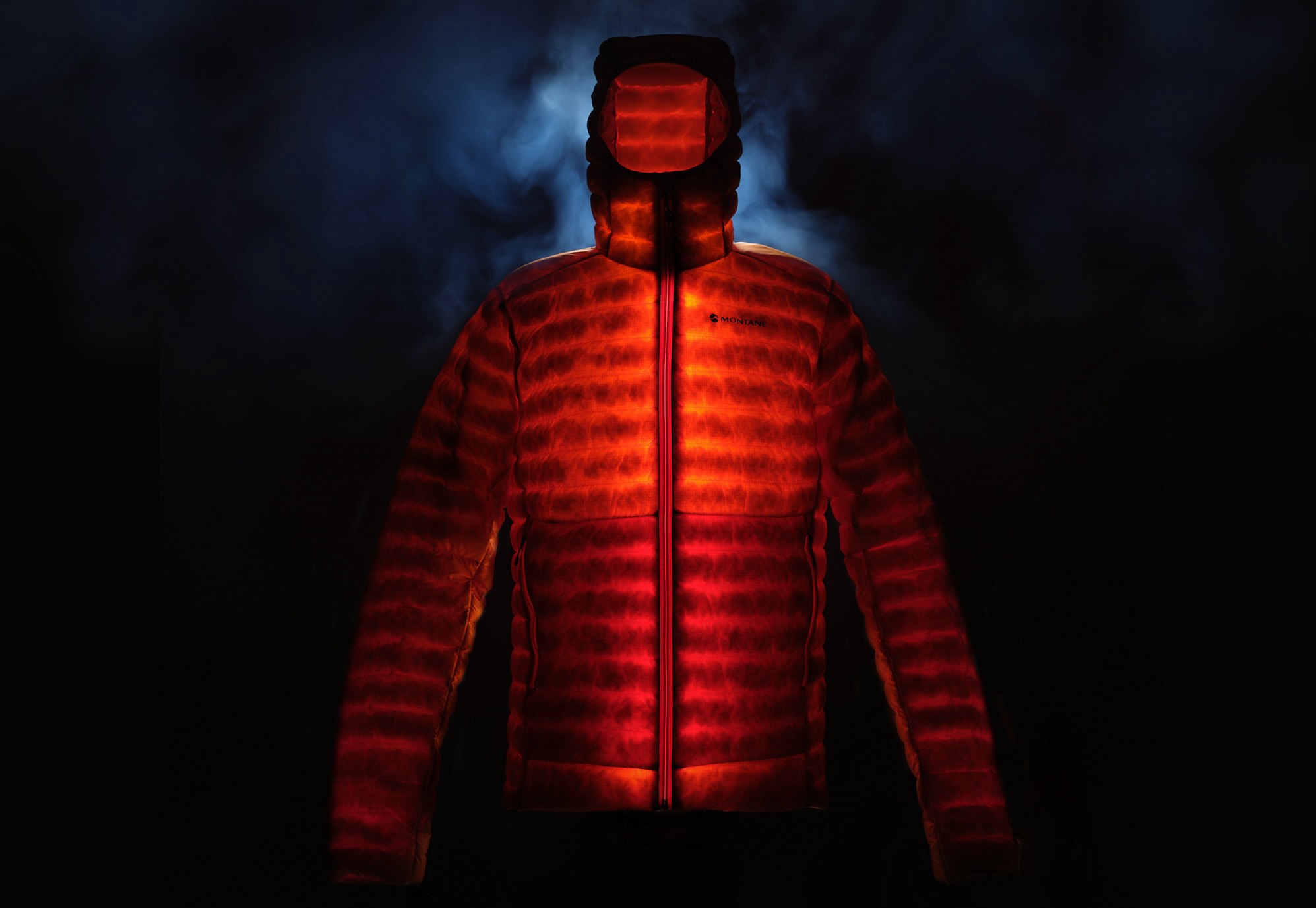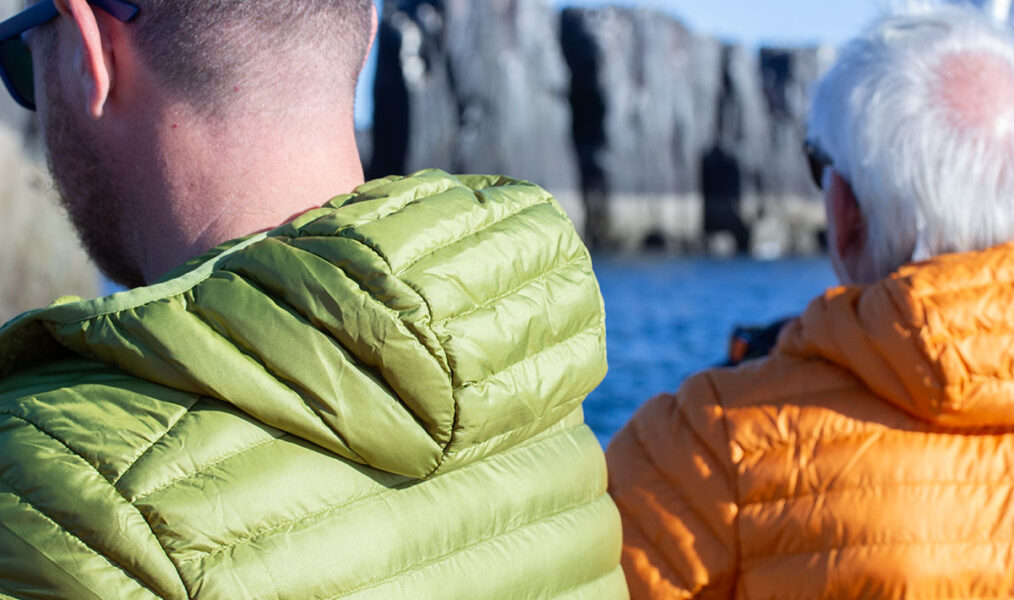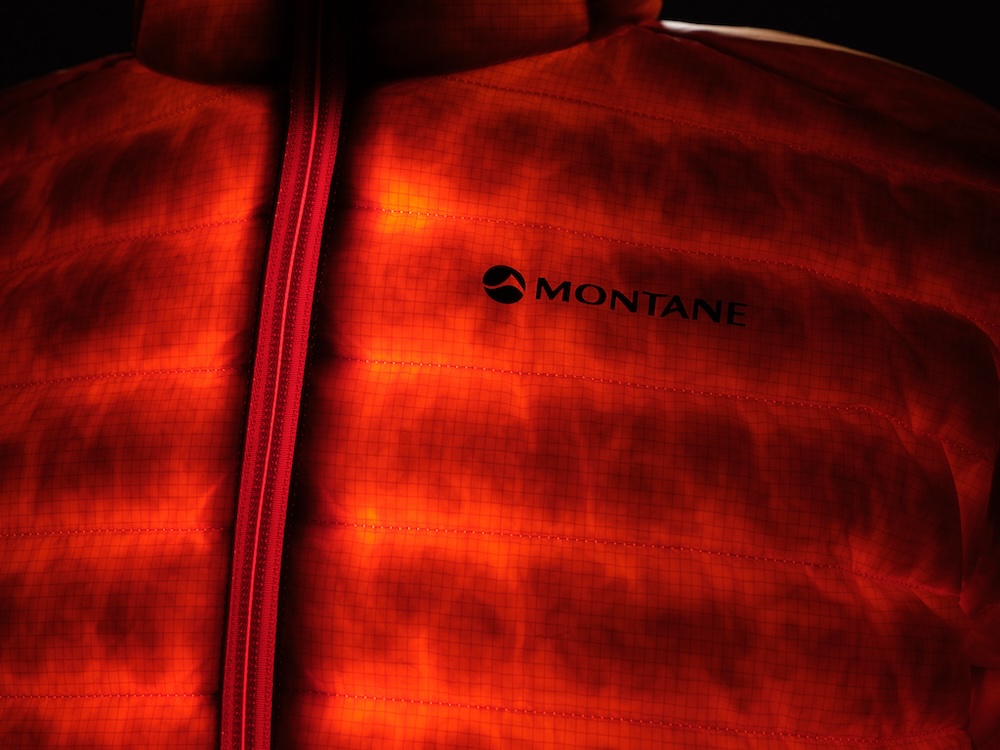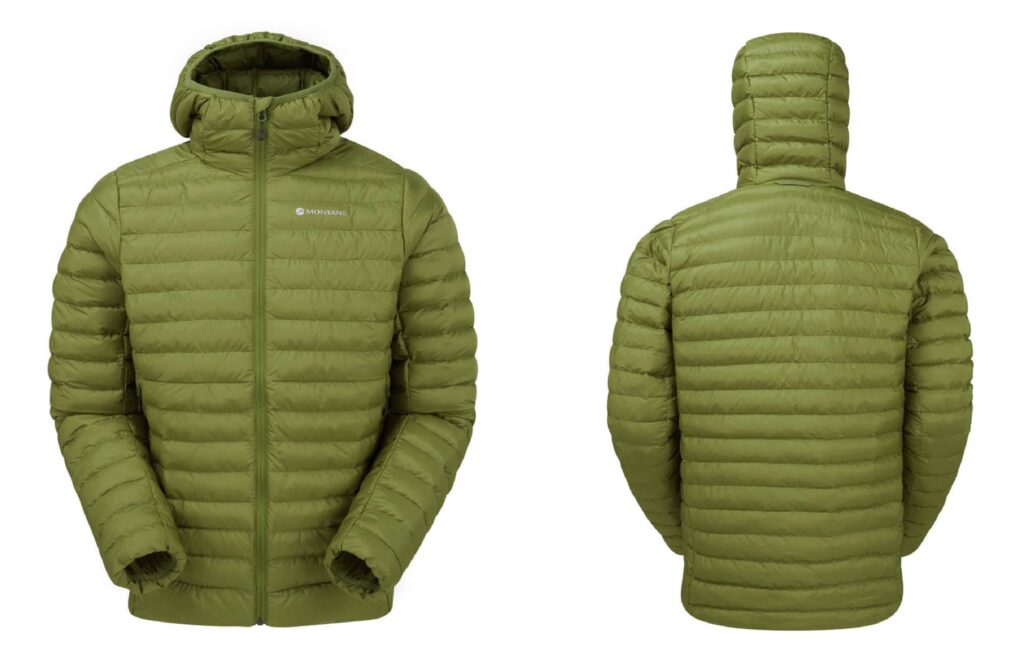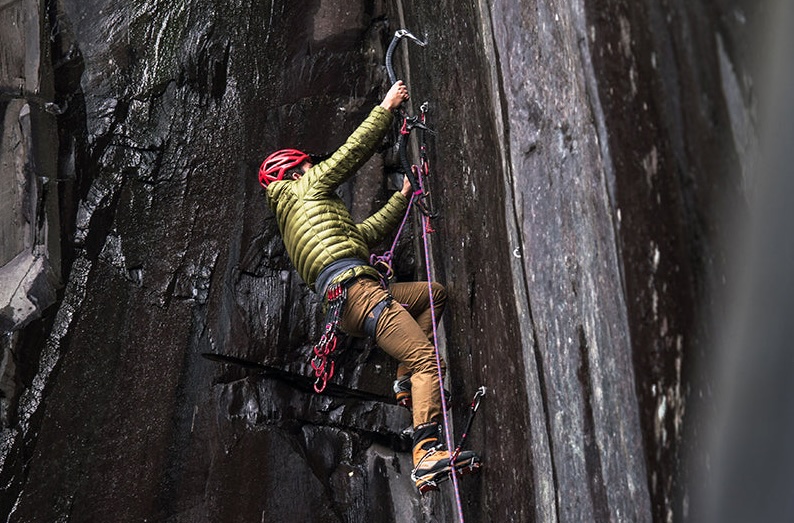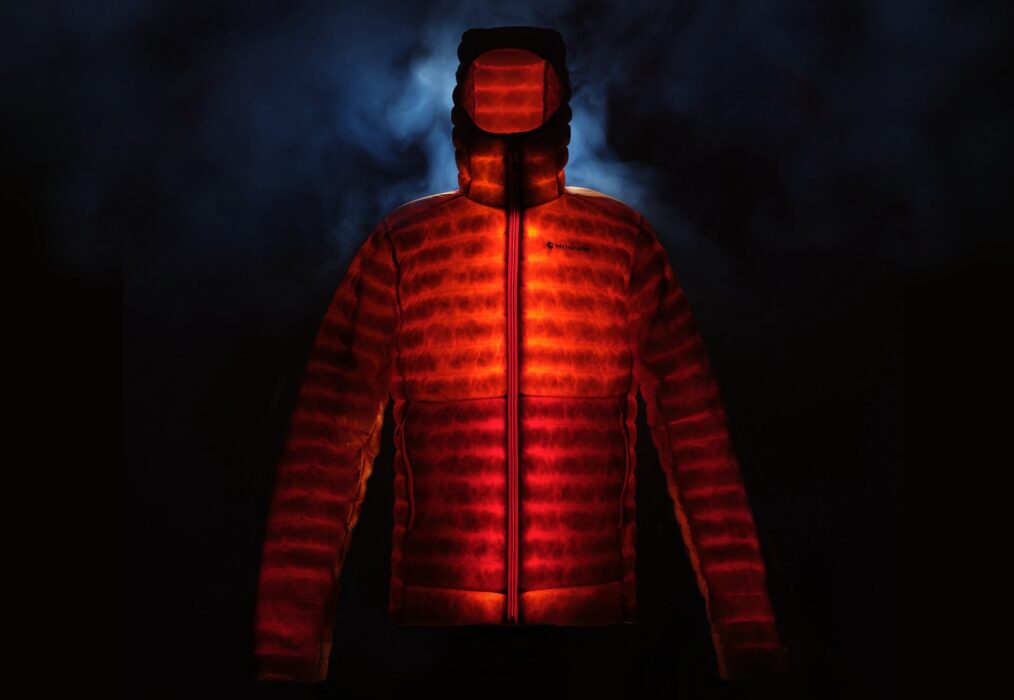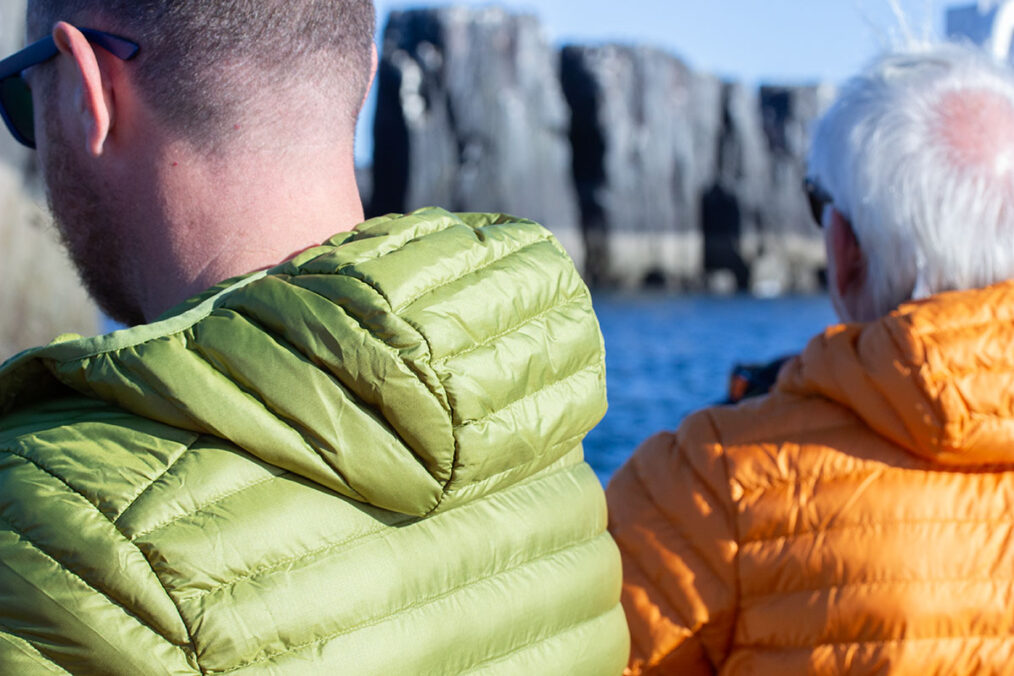Back in October ’23, we were invited to an event at Bamburgh, Northumberland, for a sneak preview of the latest version of Montane’s Icarus Jacket featuring the latest insulation technologies from PrimaLoft. We had been at the launch of the original Icarus several years ago, when we’d made the trip to Montane’s backyard to try out the jacket – so we were keen to check out the improvements/changes to the original design.
Montane’s Icarus is an odd insulated platypus of a thing. Visually, it looks for the world like a modish, micro-baffled down jacket, all horizontal tubes of warm fluffiness. In reality, it’s chock full of PrimaLoft’s damp-munching synthetic fill, and here’s the clever bit – it uses two types of PrimaLoft in an innovative attempt to have a metaphorical cake and eat it.
Two PrimaLoft technologies in one jacket
What makes the (new) Icarus different from other PrimaLoft jackets is that it combines the brand’s ThermoPlume down-type fill – basically a sort of synthetic down alternative that lofts, works and feels like down – with a sheet of the more traditional PrimaLoft. It works like this: rather than the jacket’s insulation tubes being stuffed solely with the feather-like ThermoPlume clusters, which are roughly equivalent to medium-level 550 fill-power down, they’re also backed with a sheet of conventional PrimaLoft. The claimed advantages of this arrangement are that the sheet eliminates, or reduces, heat loss along the stitch-lines making the jacket thermally more effective, but also stops the clusters migrating within the down compartment and leading to uneven fill. In theory what you should get is a synthetically-filled jacket that looks very like a down one, with trendy, slim, horizontal baffles, but with added tolerance to getting wet and, thanks to the sheet insulation component, better thermal efficiency.
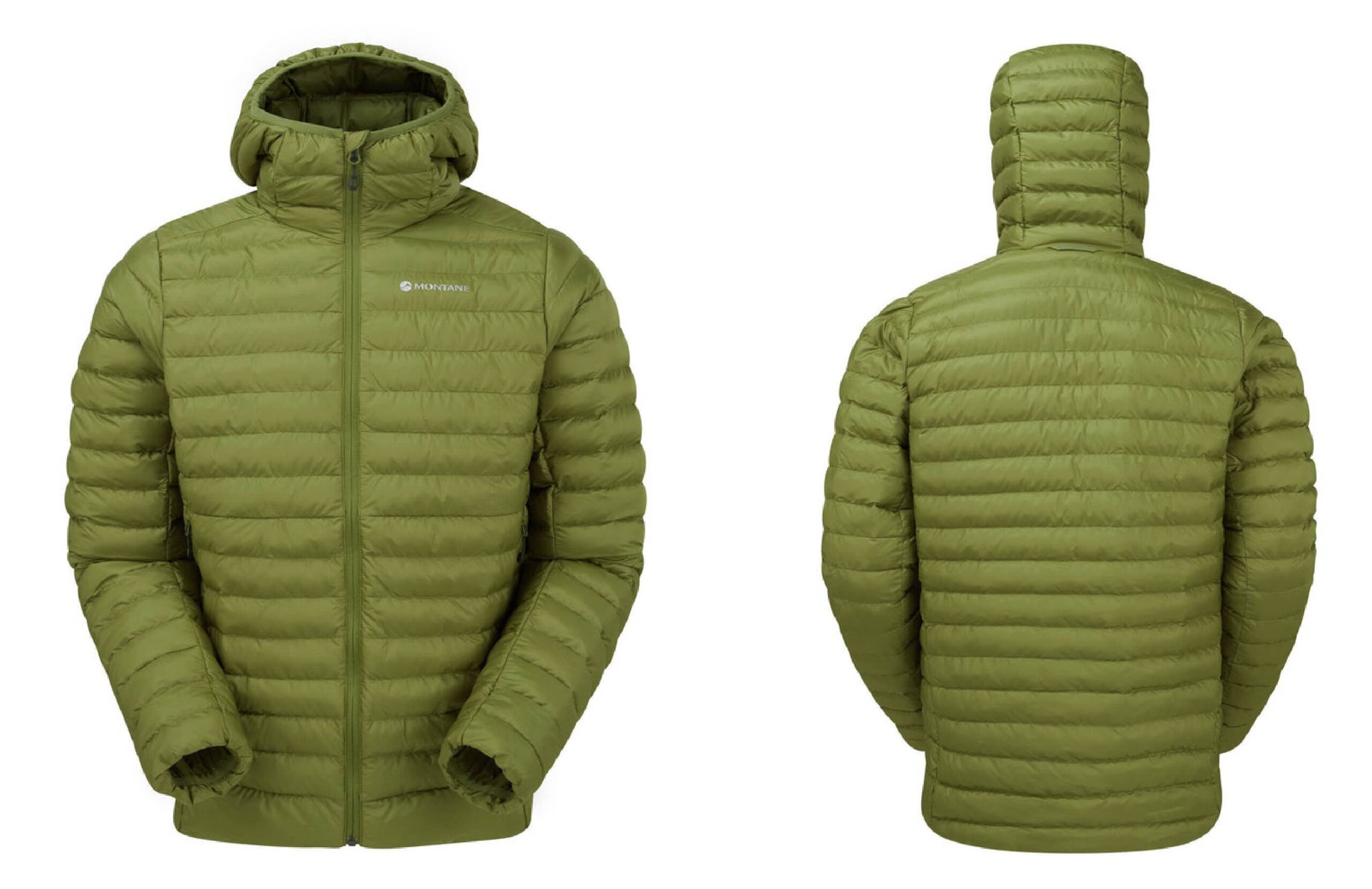
Real-world performance
It’s an ingenious idea, but how well does it work in the real world? The first thing you notice, is that the Icarus, for all its trendy, micro-baffled down looks, has a slightly stiff, inflexible feel to it and, at 540g for a size medium, it’s also a little weighty and dense rather than light and lofty. For perspective, for a similar weight, you could have a far warmer down jacket like Montane’s own Anti-Freeze XT – using 750+ fill power down – or something like a Rab Neutrino Pro, admittedly at a higher price. Or you could opt for a more conventional PrimaLoft jacket like Montane’s Respond XT, for around the same weight and price, which is arguably warmer and more practical for actual on-the-hill performance. That’s not to say that the Icarus isn’t reasonably effective, just that you perhaps lose outright performance for aesthetic considerations. It’s still a decently-warm, UK-friendly, all-round outdoor jacket, however, and I used it for cold weather lunch stops, for low-output winter walking and hiking and as back-up insulation in my pack on cold days. Note: it doesn’t pack down particularly small and has no stuff-sac or pocket that doubles as one.
Big sleeves
A few points. One is that the jacket’s sleeves are curiously over-sized in an Arnold Schwarzenegger in his prime sort of way. There’s a lot of flappy fabric and fill around the upper arms in particular and once you’re aware of it, it becomes a little irksome. It’s also inefficient when it comes to bulk and insulation. Montane says that it’s aware of this and a new, improved fit will be introduced in time for next winter with the block being standardised across the brand’s range. For me the baggy upper arms were a bit of a deal-breaker, but I’m quite fussy; others might be less bothered (or have extremely well-developed arms). It’s a bit of a shame though, as otherwise the jacket, particularly in the green test colour, looks great.
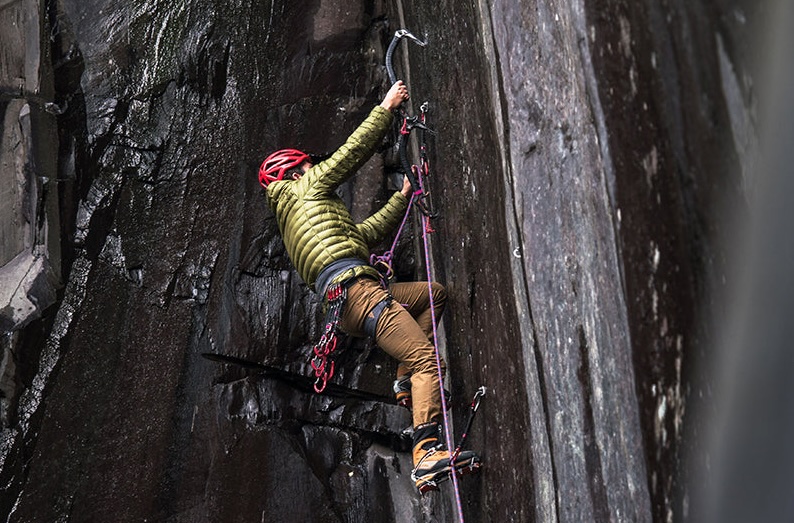
Where’s my phone?
The other issue for me, was that while there are two well-designed, insulated, zipped hand-warmer pockets, there’s no chest pocket inside or out, which means there’s nowhere to stash a phone or wallet. It’s a relatively small thing for sure, but a bit of an oversight. Otherwise things mostly work fine. The cord-adjustable hem is, well, adjustable and the simple, elasticated hood fits well enough that the lack of any sort of tweakability doesn’t matter. Finally, PrimaLoft’s much vaunted water resilience shone through. There’s a certain relaxed pleasure in using an insulated jacket that doesn’t care if it gets a bit damp. And while the fluoro-chemical free DWR – durable water repellent treatment – doesn’t bead water in the same way as older, more environmentally harmful treatments with rain soaking into the fabric, the hydrophobic fill shrugs it off and the jacket stays lofted and warm even when wet. To be fair, it does seem to go with the modern, DWR territory, the latest treatments simply don’t seem to work as well as the older versions and are more prone to contamination too.
Eco-friendliness
As a quick aside, PrimaLoft says that it is working hard to reduce its impact on the environment. In the case of the Icarus, both the PrimaLoft Black ThermoPlume and the Silver, sheet-type insulation are 100% recycled. Montane has also used 100% recycled polyester face and liner fabrics. Finally, PrimaLoft has also launched a project using plastic waste collected from coastal areas to create recycled insulation. PrimaLoft Insulation with Ocean Bound plastics collects plastic from within 50km of the coast to prevent it ‘from reaching the ocean’ where it’s both harmful to the environment and degraded to a state where it’s no longer recyclable into high quality insulation.
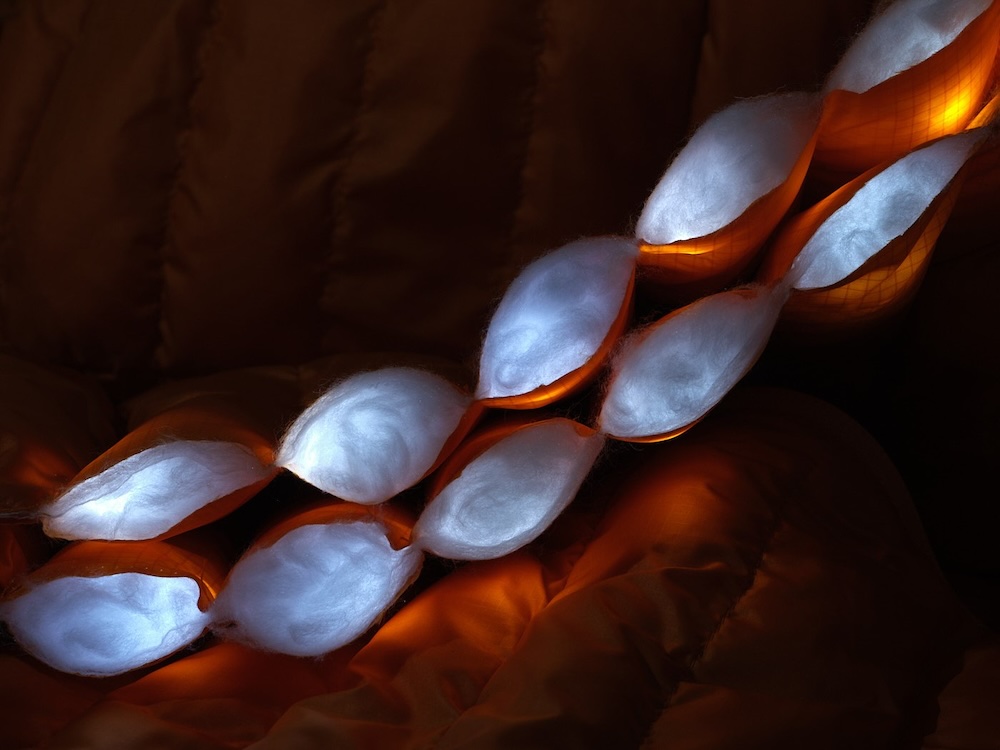
Verdict
The dual-construction idea is an ingenious and interesting one, but I’m not 100% convinced. Adding the backing sheet of conventional PrimaLoft may reduce both cold spots along the stitch-lines and add friction to stop the down-like clusters migrating, but it also gives the jacket an odd, stiff, slightly weighty feel that’s a little at odds with its down-like looks. I also wonder if it slightly reduced the ability of the ThermoPlume to loft by reducing the internal volume of the baffled compartments and contributes to the slightly flat feel of the insulation. Other niggles were the oddly over-sized sleeves, which seem like a design or production hiccup and the lack of a chest-pocket, which was just annoying on a day-to-day basis. In the end, what kills it for me is that for technical outdoor use, in purely functional terms, you’d be better off just going for a conventional PrimaLoft-filled jacket like Montane’s own Respond XT at the same weight and price. Meanwhile, at the same weight and for £60 more, you could buy Montane’s own Tundra Hooded Down Jacket and have a warmer winter option, albeit with less water resistance. Hardly surprising, given that the Tundra uses 700 fill-power down whereas ThermoPlume is only equivalent to 550 fill-power.
Against all that, the Icarus turned out to be a reasonably warm, damp-friendly, all-round outdoor jacket and the dual construction probably makes it warmer than it would be if it relied on the ThermoPlume synthetic clusters alone. And if you overlook the Michelin Man sleeves, it’s not unattractive in a down micro-baffled way. The aspect of the jacket I can’t fault, is the performance of the PrimaLoft fill in damp conditions. Even when the DWR meant that the face fabric seemed to be soaking up water like blotting paper, the insulation inside shrugged off the dampness and kept me warm regardless. And I suppose, to go back to my opening platypus allusion, if what you want is a semi-aquatic, beaver-tailed, venomous mammal that sports a duck’s bill, then here it is and it sort of works, but arguably there are other options that work better.
